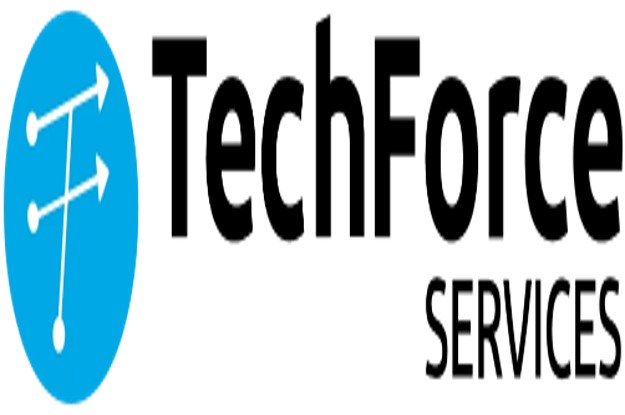
In the dynamic landscape of education, scalability is paramount for institutions experiencing growth and expansion. Salesforce, a leader in cloud-based CRM solutions, offers powerful tools like Salesforce Education Cloud and Salesforce for Education that enable educational institutions to scale their operations effectively. This article explores the significance of Salesforce scalability for growing institutions, key features of Salesforce Education Cloud, implementation strategies, challenges, and real-world applications in educational settings.
Importance of Scalability in Education
Scalability refers to an institution’s ability to expand its operations, accommodate increasing demands, and adapt to changing needs without compromising efficiency or performance. In the context of educational institutions, scalability is crucial for:
- Accommodating Enrollment Growth: Educational institutions experiencing enrollment increases need scalable systems to manage larger student populations, expand course offerings, and enhance student services.
- Supporting Technological Advancements: As institutions adopt new technologies and educational platforms, scalable solutions facilitate seamless integration, data management, and workflow automation.
- Enhancing Administrative Efficiency: Scalable systems streamline administrative processes such as admissions, student services, alumni relations, and fundraising, enabling institutions to operate efficiently at any scale.
- Promoting Institutional Growth: Scalability supports institutional growth strategies by providing flexible solutions that can adapt to evolving educational trends, market demands, and regulatory requirements.
Key Features of Salesforce Education Cloud for Scalability
Salesforce Education Cloud offers robust features designed to support scalability and growth in educational institutions:
1. Cloud-Based Infrastructure
Salesforce Education Cloud operates on a scalable cloud infrastructure, allowing institutions to scale resources up or down based on demand. Cloud scalability ensures that educational institutions can handle increased data volume, user traffic, and application usage without hardware upgrades or downtime.
2. Flexible Data Architecture
Salesforce Education Cloud’s flexible data architecture supports customization and extension of data models to accommodate evolving needs. Institutions can configure custom objects, fields, and relationships to store and manage diverse data types, ensuring scalability across departments and functions.
3. Integration Capabilities
Salesforce integrates seamlessly with existing educational systems, including student information systems (SIS), learning management systems (LMS), and financial aid platforms. This integration enables real-time data synchronization, centralized data management, and streamlined workflows across integrated systems.
4. Automated Workflows and Processes
Salesforce’s workflow automation capabilities automate routine tasks, approvals, and notifications based on predefined rules and triggers. Automated workflows reduce manual effort, improve process efficiency, and ensure consistency in administrative operations as institutions scale their operations.
5. Scalable User Experience
Salesforce Education Cloud provides a scalable user experience with customizable dashboards, reports, and interfaces tailored to user roles and preferences. Personalized user experiences enhance usability, accessibility, and adoption among stakeholders, promoting efficiency and satisfaction.
Challenges in Implementing Salesforce for Scalability
While Salesforce Education Cloud offers scalable solutions, educational institutions may face challenges during implementation and operation:
- Complexity of Customization: Customizing Salesforce configurations, workflows, and integrations to meet specific institutional needs requires expertise in Salesforce development and administration.
- Data Management and Governance: Managing large volumes of data, ensuring data integrity, and maintaining compliance with privacy regulations (e.g., GDPR, FERPA) pose challenges as institutions scale their operations.
- Change Management and Training: Adopting Salesforce across departments and roles requires comprehensive training, change management strategies, and ongoing support to maximize user adoption and minimize resistance to change.
Addressing these challenges involves collaboration between IT teams, administrators, educators, and Salesforce consultants to design scalable solutions that align with institutional objectives and promote long-term growth.
Strategies for Implementing Salesforce for Scalability
To leverage Salesforce effectively for scalability in educational institutions, consider the following strategies:
1. Develop a Scalability Roadmap
Create a scalability roadmap aligned with institutional growth objectives, IT infrastructure plans, and educational strategies. Define scalability metrics, milestones, and success criteria to guide implementation and measure progress.
2. Customize Salesforce Configurations
Tailor Salesforce configurations, data models, and workflows to accommodate current needs and future growth. Implement scalable data architecture and modular design principles to support iterative enhancements and expansion.
3. Optimize Integration and Data Management
Integrate Salesforce with existing systems and platforms to ensure seamless data flow, interoperability, and centralized data management. Implement data governance policies, security controls, and data quality measures to maintain data integrity and compliance.
4. Empower Users with Training and Support
Provide comprehensive training programs, user guides, and ongoing support to empower staff, administrators, and educators to leverage Salesforce effectively. Foster a culture of continuous learning, feedback, and collaboration to promote user adoption and proficiency.
5. Monitor Performance and Iterate
Regularly monitor Salesforce performance, scalability metrics, and user feedback to identify optimization opportunities and areas for improvement. Implement iterative updates, feature enhancements, and scalability tests to ensure Salesforce aligns with evolving institutional needs.
Case Study: Scalability Success at New York University
New York University (NYU) implemented Salesforce Education Cloud to support scalability across its global campuses and academic programs. By leveraging Salesforce’s cloud scalability and integration capabilities, NYU streamlined admissions processes, expanded student services, and enhanced alumni engagement initiatives.
Customizable dashboards and reports enabled administrators to track enrollment trends, analyze student demographics, and forecast resource requirements. Automated workflows facilitated communication with prospective students, alumni fundraising campaigns, and academic program expansions, supporting NYU’s growth objectives.
NYU’s strategic adoption of Salesforce for scalability resulted in improved operational efficiency, enhanced data-driven decision-making, and seamless coordination across departments and campuses. The university continues to innovate and expand its use of Salesforce to support educational excellence and student success.
Conclusion
Salesforce Education Cloud empowers educational institutions to achieve scalability by providing scalable infrastructure, flexible data management, integration capabilities, workflow automation, and personalized user experiences. By leveraging Salesforce effectively, institutions can accommodate growth, enhance operational efficiency, and support educational innovation in a competitive and evolving landscape.
As educational institutions navigate challenges and opportunities for growth, Salesforce remains a trusted partner in driving scalability, efficiency, and excellence in educational administration. By implementing scalable solutions, optimizing workflows, and fostering a culture of innovation and collaboration, institutions can future-proof their operations and deliver exceptional educational experiences to students, faculty, and stakeholders worldwide.







